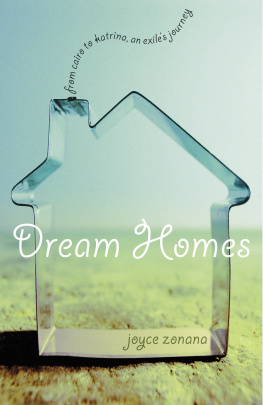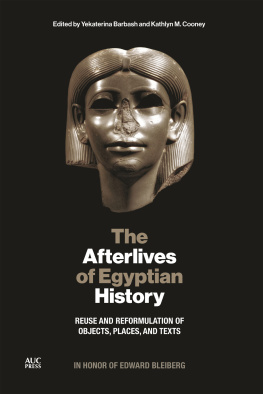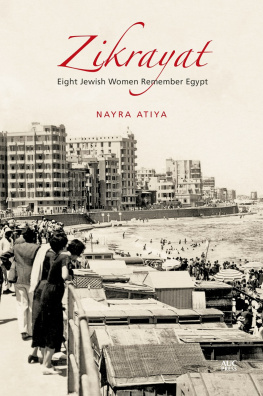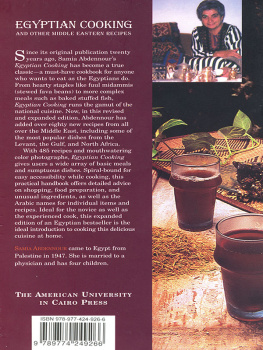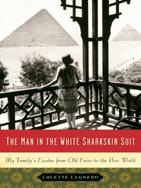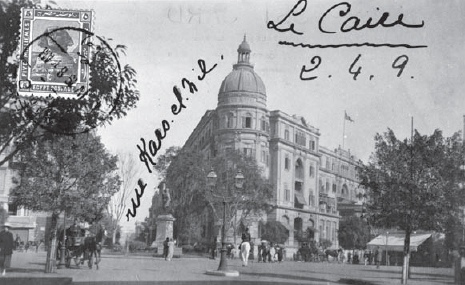
Dream Homes
The Reuben/Rifkin Jewish Women Writers Series
A joint project of the Hadassah-Brandeis Institute and The Feminist Press
Series Editors: Elaine Reuben, Shulamit Reinharz, Gloria Jacobs
The Reuben/Rifkin Jewish Women Writers Series, established in 2006 by Elaine Reuben, honors her parents, Albert G. and Sara I. Reuben. It remembers her grandparents, Susie Green and Harry Reuben, Bessie Goldberg and David Rifkin, known to their parents by Yiddish names, and recalls family on several continents, many of whose names and particular stories are now lost. Literary works in this series, embodying and connecting varieties of Jewish experiences, will speak for them, as well, in the years to come.
Founded in 1997, the Hadassah-Brandeis Institute (HBI), whose generous grants also sponsor this series, develops fresh ways of thinking about Jews and gender worldwide by producing and promoting scholarly research and artistic projects. Brandeis professors Shulamit Reinharz and Sylvia Barack Fishman are the founding director and codirector, respectively, of HBI.
Dream Homes
from cairo to katrina, an exiles journey
joyce zonana
Published in 2008 by The Feminist Press at The City University of New York
The Graduate Center
365 Fifth Avenue, Suite 5406
New York, NY 10016
www.feministpress.org
Text copyright 2008 by Joyce Zonana
All rights reserved.
constitutes a continuation of this copyright page.
No part of this book may be reproduced or used, stored in any information retrieval system or transmitted in any form or by any means, electronic, mechanical, photocopying, recording, or otherwise without prior written permission from The Feminist Press at The City University of New York, except in the case of brief quotations embodied in critical articles and reviews.
Library of Congress Cataloging-in-Publication Data
Zonana, Joyce.
Dream homes: from Cairo to Katrina : an exiles journey / Joyce Zonana.
p. cm.
ISBN-13: 978-1-55861-573-1 (trade paper)
ISBN-13: 978-1-55861-574-8 (library)
1. Zonana, Joyce. 2. Zonana, JoyceChildhood and youth. 3. Jews, EgyptianUnited StatesBiography. 4. Jewish womenUnited StatesBiography. I. Title.
E184.37.Z66 2007
962.004924dc22
2007033835
Text and cover design by Lisa Force
Printed on acid-free paper in Canada by Transcontinental
12 11 10 09 085 4 3 2 1
For Kiana
A s a child, I found my home in books. I dreamed of writing one. But until I began to work on this memoir, I thought of writing as a solitary enterprise. To my surprise, I discovered it to be an intensely communal adventure, bringing me into ever-deepening contact with an ever-widening circle of people. Through the act of writing, I found my home in the world.
This book got its start in the Zora Neale Hurston shed at Norcroft: A Writing Retreat for Women. I was lucky enough to have three luxurious and productive residencies at Norcroft. Two other womens writing retreats also offered me much needed rooms of my own: Hedgebrook and Soapstone. Without the hard work and vision of the women who founded these havensJoan Drury, Nancy Skinner Nordhoff and Sheryl Feldman, and Judith Barrington and Ruth Gundle, respectivelyalong with the many others who fund and staff them, I could never have written this book. While at these retreats, I met wonderful women writers whose courage, commitment, and talent inspired and sustained me; among them, Anne Dunn, Susan Freireich, Bushra Rehman, and Cheryl Reitan remain as cherished friends.
In New Orleans, two writing groups provided secure homes for me and my work. One, a supportive circle of womenGillian Brown, Lynn Byrd, Bonnie Fastring, Alice Kemp, Beverly Rainbolt, and Martha Wardcalled itself the Sorta Zona Rosa Group. Meeting monthly to share meals and manuscripts, we took our inspiration from the Zona Rosa groups run by Rosemary Daniell, who also offered her inimitable individual encouragement. The second, a handful of colleagues from the University of New Orleans Department of English, met occasionally for exhilarating afternoon sessions at Joes Crab Shack on Lake Pontchartrain. Randolph Bates, John Hazlett, and T. R. Johnson gave my writing the scrupulously detailed critical readings that helped refine my prose and shape the overall manuscript. Joes is gone, but Randy, John, and T.R. are always with me.
Also in New Orleans, Michele Levy, Christine Murphey, and Darlene Olivo were writing partners and good friends. Kay Murphy loved me and believed in my writing, and she modeled the life of a writer. I cannot thank her enough. My East Coast friends Jimmy Griffin, Laura Rose, and Suzanne Brown read early drafts of the book and shared it with their families. That Jimmys mother, Lauras father, and Suzannes husband liked my work kept me going.
Carol Christ gave me the Mediterranean. Mervat Hatem gave me Cairo. Carmen Weinstein gave me Jewish Cairo. The New Orleans Jung SeminarBattle Bell, Jutta von Buchholtz, Blanche Gelfand, Joan Harrison, Karen Gibson, Mike King, Lucie Magnus, Marilyn Marshall, Charlotte Mathes, Del McNeely, Nancy Qualls-Corbett, Connie Romero, David Schoen, Stephanie Thibodeaux, Deedy Younggave me my Self. Barbara Koltuv listened.
Florence Howe said, Yes, Id like to read it, when, at Martha Wards insistence, I sent an e-inquiry to The Feminist Press. And then she said, Yes, wed like to publish it. In The Feminist Press, I found another extraordinary, unexpected home. Franklin Dennis, Lisa Force, Gloria Jacobs, Jeannette Petras, Anjoli Roy, Janet Tanke everyone I have worked with has been thoughtful, wise, supportive, patient, and smart. Cheers to and for all of you!
My grandmothers and my grandfathers, my mother, my father, my uncles and my aunts, my brother, my cousins, my lovers, my students, my teachers, my friends. Each person I have known has contributed to this book. I thank them all. I thank the spirits of all the directions. And, most of all, I thank the Great Spirit.
Suleiman Pasha square, Cairo, 1906. Courtesy of Max Karkegi, LEgypte dAntan (www.egyptedantan.com/egypt.htm).
Deep inside, we know well lose
everything we own at least twice in our lives.
Andr Aciman, Out of Egypt
F or many years, my lover slept in her maternal grandmothers bed, an antique mahogany four-poster, high off the ground, with an arching, inlaid headboard. During the year we lived together in my tiny New Orleans home, Kay stored the bed, along with its matching dresser and vanity, in a damp commercial warehouse, where it languished, threatened by decay. My mattress was too wide, and the house was already too crowded. But Kay yearned for her grandmothers bed; without it, her sleep was disturbed. She and her grandmother had been each others favorites. As a child, Kay found peace at her grandmothers side; later, she nursed her during her final illness. When her grandmother died, the family urged Kay to take what she wanted. Along with the bedroom suite, she chose bookshelves, end tables, a heavy chest of drawersall in that dark mahogany, carved and rich with detail. She transported it from Illinois in a rented van, driving the long miles with the help of a friend.
Next page
